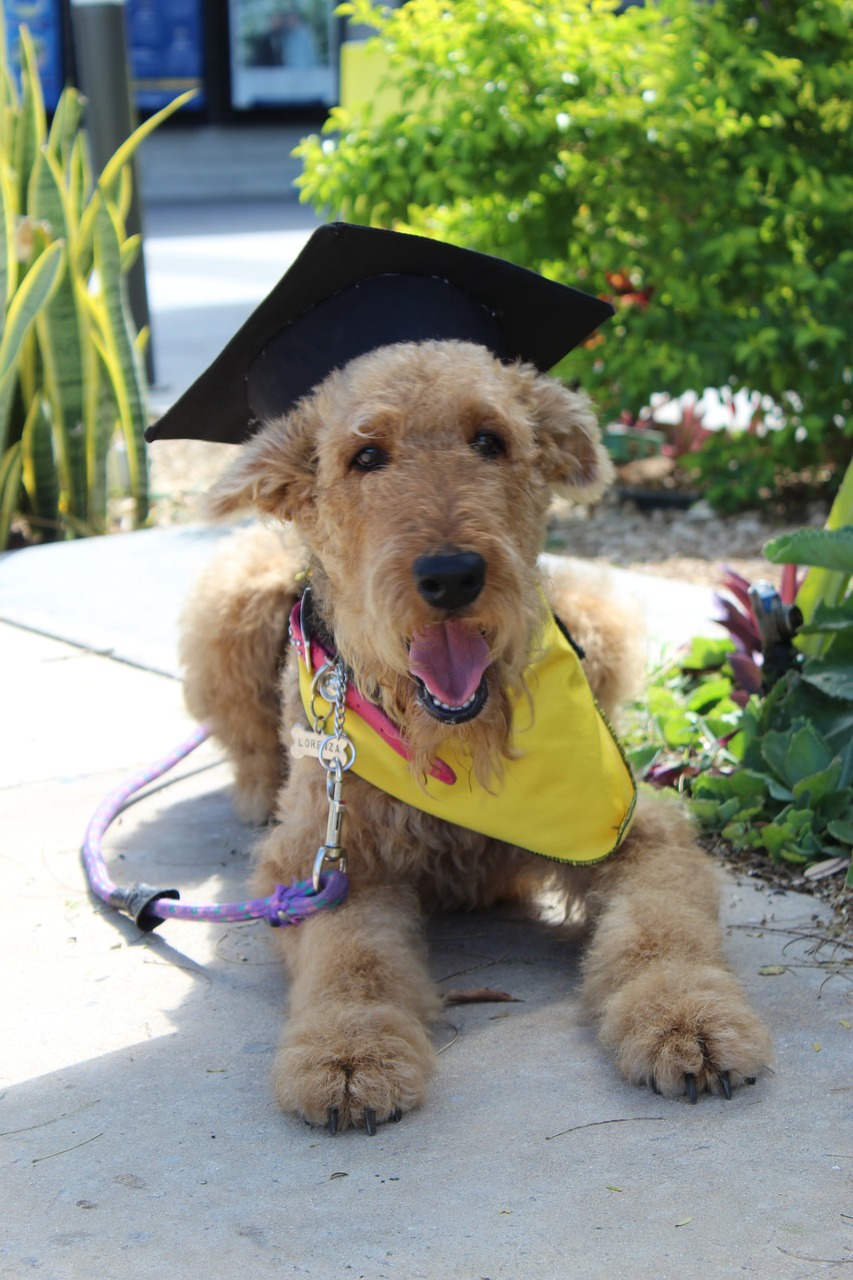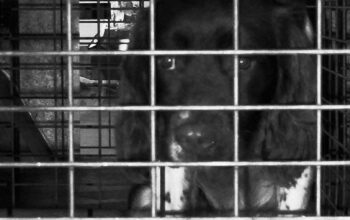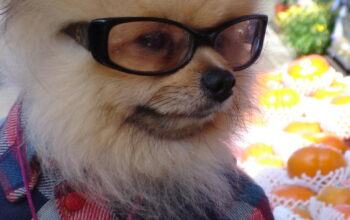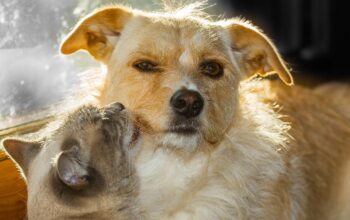While all dog breeds are training with the right methods and patience, you can make the job easier by choosing a breed that is highly trained rather than the naturally rebellious and loving but slow-witted.
Here is our list of the most breedable dogs and what makes them so easy to work with. We’ve also put together some top tips on how to efficiently train your selected companion dog.
Most tamed dog breeds
We have included on our list pure breeds of dogs only, because their characteristics are the most predictable. There are also plenty of cross-breds that are highly training, including both Labradoodles and Goldendoodles. It is generally difficult to predict adult traits of cross-breed pups.
Labradors – Labradors
While we have put our list in “no particular order” it should not surprise us to see our beloved Labrador Retrievers at the top of the list. They were originally raised as hunting dogs to retrieve game and are both highly intelligent and eager to please. Combining these two qualities means that they are one of the easiest to train dogs. They have a fun and calm temperament and also have a lot of energy and love the great outdoors. They are the perfect dogs for active families because they love children as well. They will treat them as their own and they know their own strength so there aren’t any unfortunate accidents likely.
Golden Retrievers
Golden retrievers are one of the friendly dogs out there. Despite not making great guard dogs, they are ideal family pets. Like Labradors, they combine intelligence with a desire to please. This means that a little positive reinforcement can go a long way and they can learn new commands within less than a dozen repetitions. They are especially motivated by food so small treats make an excellent training tool. This is another dog that has the right temperament to be a family dog or a help dog. Like Labradors they have a soft mouth which also means they can pick up and retrieve without harming them.
Border Collie
While these long-haired and regal looking puppies need quite a bit of grooming and exercise, this can be the perfect bonding experience for you both. Border Collies were breeded as chowhounds and are more independent thinkers than many of the breeds on this list and often know what needs to be done without commanding them. However, while they are independent and sensitive to their own needs, they are not rebellious. All of this together with their inherent intelligence, and they are very easy to train.
Border Collies are often ranked on many lists as the intelligent dogs. This is great, but it can come with a price. If you do not give your Border Collie enough mental stimulation, he’ll find his own way to satisfy his boredom by potentially becoming destructive and smashing the family couch. While poodles may have a reputation for being a “posh” breed, not least because of their intense grooming needs, they are perhaps one of the intelligent dogs breeds.
Poodles were breed as companions, which means they have an even temperament, are pliable and are eager to please. Add this to their intelligence and they usually pick up new commands within less than a half dozen repetitions. They are all easy to train whether you go for miniatures, toys or standard poodles, which is why you can keep them in the house without worrying about accidents. Their tight coat means they do not shed or leave hair everywhere they go. As you may have thought the no shed has a cost. I’ve heard complaints from new poodle owners about how they have to keep brushing, grooming and cutting their coats regularly.
German Shepherd
German shepherds have been a favorite working dog for many years and are commonly seen beside the military or police. Their size and strength, plus their training ability, makes them perfect for this kind of work. These dogs are very dedicated to their humans and nothing. They learn fast new commands and their reputation for aggression is not deserved. A well-trained German shepherd is quite docile. But this is another breed that needs lots of exercise and mental stimulation. If you leave them alone 10 hours a day at home, no matter how well trained they are, you will probably find a mess waiting for you.
Welsh Corgi
It is important to be specific when discussing Corgis. While a Pembroke Welsh Corgi is obstinate to a fault, Cardigan Welsh Corgis are among the easiest dogs to train. These dogs are not only easy to train, but they are relatively small and do not need much exercise so that it is not too hard for them to adapt to city life.
Shetland Sheepdog
Another sheep-herding breed, Shetland sheepdogs have the same intelligence and desire to please that make them easy to train. They are especially good dogs when it comes to learning tricks and their sporty physique means they can complete the agility trials of show dogs. They are also fascinated by the unknown and they can come to grips with quite complex tricks and commands. These affectionate dogs will soon become a part of the family and will be one of the most obedient children. They tend to be territorial and bark, but this is easily controlled with the proper training…
Papillon
If you are looking for a small breed that is also highly trainable, the Papillon with its butterflies ears is ideal. It is one of the few small dogs that have this trainable temperament. They are curious and pay attention and intelligent enough that they learn very quickly. They are also eager to please so will respond well to training with reward If you develop these pups in good time when they are young, it will stick for life. While they appear like small lap dogs, beware—Papillons have a lot of energy. And like all intelligent dogs, they need to be stimulated as well as exercised.
Australian Cattle Dogs
This is yet another cow dog with a natural herd instinct and a desire to please. Australian cattle dogs are not just highly intelligent – they are also relentless in their work ethic. This means they can focus on you and learn what they need without gaining distractions. But at the same time, they are independent thinkers and problem-solvers. While this is a great skill in working dogs, it does mean that they can be escape artists. These cattle dogs make perfect working dogs or pleasant household pets, though again if they aren’t working they will need a lot of exercise. A dog with a lot of pulp will get in trouble, no matter how well-equipped he or she is.
Miniature Schnauzer
Another one of the few smaller dogs that are also highly trainable – the mini-schnauzers may look like terriers, but they have a different origin – which is why they are much more trained. Although these dogs are easy to train, they are also willful so they need to be managed with a firm hand. They need consistent training and reward and a leader who can exert an air of authority.
Characteristics Of Training Dogs
What makes some dogs highly trained while others will never learn to brush your shoes? While some of it comes down to you and how you train your dog, there are a few characteristics that makes training a dog easier.
Intelligence : The more intelligent the dog will learn to associate certain commands with desired actions more quickly. For example, an intelligent Border Collie can learn a new command after less than five repetitions while some less intelligent breeds may require more than 100 repetitions and still not remember every time.
Gifted To Hunt Or Herd. Breeding dogs to hunt, hive or retrieve game tend to be more eager to please and therefore more willing to put in time and effort to learn new skills. They are also motivated by their owners’ reward and recognition and thus respond well to training based on positive reinforcement. These dogs will also not be equally able to go out. Some were bred to work in collaboration with humans while others were bred to work more independently. While the latter are still highly trained, they tend to be problem solvers too. That is great except when they turn their skills to the problem of freeing the meat on top of the fridge that he safely puts on the shelves to defrost.
Dogs with a lot of energy tend to respond better to training duties. But they can also demand a lot of work at the same time. Consequently, they require a minimum daily exercise requirement. If they do not receive the activity they need, all your work can be wasted. Excessive pent up energy will result in a nasty dog no matter how well trained.
Not Easily Distracted. Some dogs are easier distracted by the things in their surroundings than others. It is not every dog that will be able to concentrate on you when another person walks in the room or when the smell of another dog flies past. In other words, while bloodhounds are very intelligent, their sense of smell is so good that it almost always overrides their training. It is best to choose a dog that can focus on you even when chaos erupts around you. Perhaps that is when their training will be most important.
Training tips for dogs
As a general rule we always recommend training methods that include positive reinforcement – which means rewarded dogs for presenting the correct behavior – and never resorting to punishment if they have behaved in a way other than desired.
So just among these, here are some of our top tips.
- Find a distraction-free zone in the following directions.
When you start teaching your dog something completely new, you will want an area that is free of distractions. A positive focus on how quickly the new command or skill will make a big difference will be. Once they master the command in a distraction-free zone you can add distractions. At first, it should be simply something simple, like someone having another person in the room. Slowly, in a place full of stimuli, such as the local dog park, you can work up to the commanding act.
- Long, regular sessions to use
Your dog hasn’t the same attention span as you do. If you schedule hour-long training sessions they will find it very hard to concentrate long before the session is over. This can often mean you finish the session on a low-level when they start to engage in negative, distracted behavior. Ideally, you want to finish the task on a high level when they have accomplished the task a number of times already. It is better to break up your training session a couple of times a day into short 15-minute sessions instead of trying to squeeze all of it into long sessions.
- Achieve what you like and take away rewards
It is common knowledge that you should reward your dog for good behavior as this reinforces that it is in their best interest to follow this command. At the same time, you must make sure that bad behavior never seems like rewarded behavior is If you chase them around the house after they poop on the floor, they might think that is quite a fun game. If your dog jumps on the sofa to sit on your lap and that is something they should not do, far better to ignore them than to hit them or to shout them at them. If you pay them any attention, this can be a reward; it is better to look away and totally ignore them. When they step down and sit in front of you and wait for you, you can then reward them with a nice pat.
Reward your dog or face consequences – make sure it is in the moment.
Dogs do not have the ability to connect things that have broken apart in time. Hence, it is ineffective to yell at your dog when you find the puddle of poop. They will not realize that your actions are in response to something they had done hours earlier. Good behavior must immediately be rewarded and you must catch your dog in the act for consequences to have any effect.
What is the simplest dog to train?
The easiest dogs to train tend to be intelligent dogs that can learn commands quickly and dogs bred for hunting, herding and retrieving since they have been bred to cooperate with humans. This means they tend to be interested to please and respond better to positive reinforcement training techniques. Labradors and Golden Retrievers are among the easiest dogs to train – which is why they are often used as work and support dogs.
What is the least trained dog?
There are quite a few breeds of dogs that are independent and stubborn. They may be smart and understand exactly what you want, but like a cat they don’t care much. These make them extremely difficult to train. Among these dogs are a number of dogs of the genre.
- Afghan Hounds
- Chows Chows
- Bloodhounds
What Is The Easyest Dog To Own?
Which breeds of dogs are most difficult to own depends on what you are looking for. For example, Labradors are intelligent, friendly and highly trained. But they also need at least an hour of exercise a day and can not be absorbed alone for long periods of time. They are therefore not necessarily easy to own. Poodles are highly intelligent and need less exercise but they do require a significant amount of grooming. Which type of dog will be easiest for you to own depends on your situation and the kind of tasks you find difficult.
What breed of dog is tranquil and calm?
If you are looking for a dog who is quiet and calm, very happy to hang out at home with you and won’t begin to bark every time a cat approaches the house, consider a hound.
- King Charles Cavalier Spaniel
- Greyhound
Which dogs can’t be left alone?
There are a number of dogs that seek human companionship and can develop anxiety, depression and antisocial behavior when left alone for long periods of time. These include:
- Poodles
- Chihuahuas
- Bichon Frise
To be fair, these dogs were bred to be personal companions and lap dogs, so it is not their fault. But they are not the best option if you spend a lot of time at the office.
Which dogs may be left alone for eight hours?
If you want a dog but you work long hours and are worried that they may leave you alone, be sure to choose a breed that will not develop anxiety and depression if left alone for eight hours. The best breeds for this are included
- Greyhounds
- Basset’s Hounds
Remember dogs are social animals and don’t thrive when left alone in the morning at all times. If you are leaving your dog home alone all day, you may want to consider a different pet that thrives when left alone.
Final Thoughts
While all dog breeds are trained with patience and the right techniques, there are some breeds that are better prepared than others to learn commands. Choose intelligent breeds that have been bred to work with humans, such as herds and retrievers. Labradors meet both of these criteria and hence are one of the most highly trained breeds possible.



